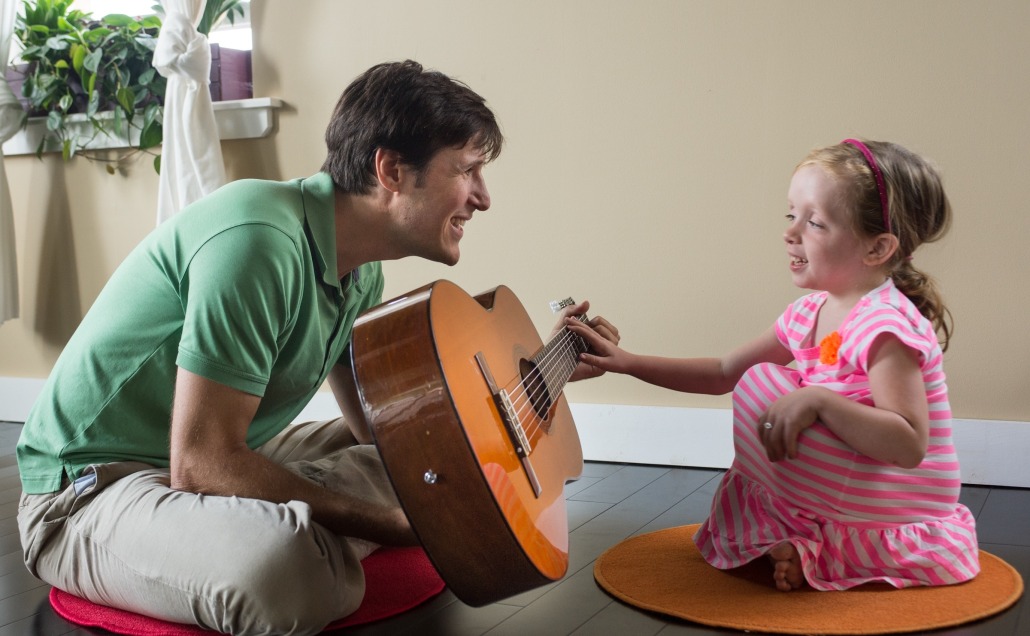
What is Music Therapy?
-
There are a range of music therapy types for all kinds of people and circumstances
-
Music therapist and professional musician Gráinne Foster explains
-
If you are interested in finding a music therapist, you can find one here
What is music therapy? Depending on many things, including my energy levels and perception of the openness of the questioner, this question can elicit from me a breadth of reactions.
It's the one most often posed to me, since my decision to train as a music therapist five years ago. It's one for which the answer has since mutated into many fluid variations and continues to be re-defined for me.
To a stranger, I will answer, “using music to help others". To an interested colleague however, the answer is more complex, as music therapy is not one unified approach. Instead it encompasses a range of therapeutic techniques with different emphases on the balance of words and music in sessions, and varying uses of live, improvised, pre-composed or recorded music.
Further, the client-led nature of music therapy means that the same music therapist may use a range of different approaches with different clients. At the heart of all approaches however is the development of a therapeutic relationship between therapist and client (or group of clients).
We are innately musical beings, with a capacity to respond to music that is not dependent on ability.
Music can be a powerful tool for facilitating this relationship and working on specific goals such as increasing communication, encouraging self-expression and emotional exploration, and enabling personal and psychological growth. We are innately musical beings, with a capacity to respond to music that is not dependent on ability.
Importantly, the music therapist Mercedes Pavlicevic emphasises that “music therapy is not about playing 'nice' music. We need to create sounds on the spot, to meet whatever the child or adult is doing; to meet however that person is 'being' in that moment … and this does not necessarily fit with musical convention". Many music therapy approaches draw from psychoanalytical theory.
These range from the “strictly Freudian-orientated music therapist" who does not improvise with the client, focusing purely on verbal interpretations of the client's music; to the analytical music therapist trained in the object-relations approach who improvises music with the client, placing a greater emphasis on musical therapeutic techniques. 'Music-centred' music therapists focus on music as therapy and the transformative power of music itself. In her philosophy of the music therapy process, Pavlicevic emphasises that “musical acts can themselves be psychodynamic", and that a lack of verbal processing in the music-therapy relationship does not necessarily preclude psychological thinking, which for her is an important aspect of music therapy.
'Music-centred' music therapists focus on music as therapy and the transformative power of music itself.
Music therapist and Jungian analyst Sandra Brown echoes a similar view in stating that while in her belief psychological thinking is crucial in order for therapists to understand music therapy events, “music itself can bring about integral change within the music therapy process". In my own work with children and adults with learning disabilities, acquired brain injuries and mental health issues, my approach varies depending on the clinical context.
In the course of a week I might find myself communicating non-verbally with children with autistic spectrum disorder by improvising music at the piano in response to their movements; tackling issues of self-identity and loss with a stroke survivor through song-writing; and leading a choir for people with learning disabilities. However the task of describing how the process of music therapy actually works, whether to a stranger or a curious friend, remains a distinct challenge.
Music therapists Dimitriadis and Smeijsters state that “the greatest difficulty lies in the fact that music therapists have no choice but to use words in order to describe a process that is beyond words". Video case studies highlight this and speak for themselves; you can view a moving music therapy case studies in action here:
Quotes, where not specified, are taken from Nordoff Robbins Music Therapy, B.B. Scheiby (Music as Symbolic Expression, 1999) and Kenneth Bruscia (Improvised Models of Music Therapy, 1987), respectively.










